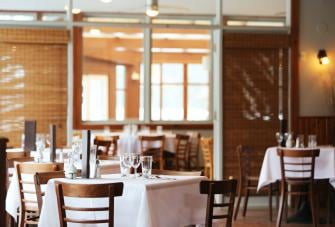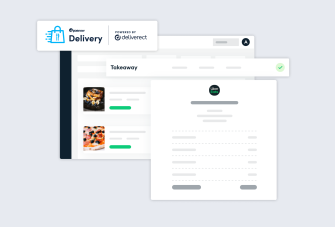What Does "86" Mean in Restaurant Business: Decoding Industry Lingo
Working in a restaurant comes with plenty of restaurant slang and jargon – and 86, eighty six, or 86'd, is one of the most popular terms you'll overhear in any bar or restaurant.
But what does 86 mean in the restaurant business? It's not just a number. It's a key piece of restaurant slang that carries various meanings and origins.
In this article, we'll delve into the intriguing world of restaurant lingo and decode the mystery behind the term '86'. So, whether you're a line cook, a curious diner, or just someone looking to expand their vocabulary, let's uncover the secrets behind '86' in the restaurant industry.
What does the term 86 mean?
Imagine you're at your favorite eatery, and you've got your heart set on a mouthwatering dish, like those heavenly ham and cheese croissants they make. But here's the twist: they only whip up a limited batch of these delectable treats every morning because they're kinda fancy and take time to prepare.
Now, fast forward to 11:00 AM. Your trusty kitchen crew, they know the drill. They see the ham and cheese croissants are running low, or worse, they're all gone. So, what do they do? They give a shoutout to the front of the house crew and say the slang term, 'Hey, let's '86' those ham and cheese croissants.'
Translation? They're telling everyone that the main ingredient for those croissants, like the ham or cheese, is all used up. So, you won't find it on the menu or online ordering because they simply can't make more.
'86' is just a fancy way of saying 'out of stock' or 'sold out.' So, next time you hear it in a restaurant, you'll know the secret language behind those kitchen doors!
Where does the term 86 come from?
The origins of this quirky phrase might not have a single 'Eureka!' moment, but there's a pretty interesting story that goes way back.
So, picture this: It's the early 1900s, and there's a speakeasy (that's a secret alcohol-equipped bar during Prohibition, for those not in the know) in Greenwich Village called Chumley's. It's nestled at 86 Bedford Street. Now, the 1920s weren't exactly the friendliest time for bars like Chumley's since, you know, alcohol was kinda illegal.
One fateful day, the police decided to pay Chumley's an unexpected visit. Talk about party crashers, right? When the law enforcement folks showed up to shut down the joint, the story goes that the guests were given a stern ultimatum - they were told to '86' it immediately, meaning they had to scram, get out, and leave the premises immediately. They all ran out of the several hidden exits to escape.
And guess what? The term '86' stuck around like a sticky sauce on ribs. From then on, it became the go-to slang in the restaurant industry to indicate that a particular dish or particular item is no longer available.
Preventing menu item shortages: 7 effective strategies for the restaurant industry
Running out of menu items can be a real buzzkill for both your customers and your restaurant's profitability. To keep those delicious dishes flowing and prevent the dreaded "86," here are seven practical strategies tailored for the restaurant industry, from effective inventory control to maintaining a flexible menu design.
1) Effective inventory management:
Keeping a close eye on your inventory is crucial, especially in the restaurant industry. Implement a robust restaurant POS (point of sale) system that integrates with your inventory management system to track ingredient levels accurately. Set up alerts to notify you when stock levels are running low. This way, you can reorder supplies in a timely fashion, ensuring you never find yourself in a last-minute scramble to restock essential ingredients. TIP: Learn how to manage inventory with a POS system today!
2) Regular menu analysis:
Regularly assess your menu items to identify the stars and the underperformers. Are there particular items or dishes that consistently gather dust? Consider rotating or discontinuing items with consistently low demand. By doing this, you reduce the risk of being stuck with excess inventory that may ultimately go to waste.
3) Cultivate supplier relationships:
Forge strong relationships with your suppliers within the restaurant industry. This not only ensures a steady and reliable source of ingredients but allows for better communication. When you have a close rapport with your suppliers, you can alert them to changes in demand or seasonal fluctuations, helping to prevent shortages.
4) Accurate forecasting:
Forecasting demand accurately is like having a crystal ball for your kitchen. Utilize historical sales data from your POS system and industry trends to make educated predictions about what your customers will order. Adjust your ordering quantities based on expected customer traffic. This way, you're less likely to overstock or run out of essential items.
Take Control with a Responsive Restaurant POS
Host with confidence when you rely on Epos Now’s dedicated restaurant POS. Process multichannel sales (from in-house, takeaway, and delivery) all in one place!
5) Menu specials and features:
Daily or weekly specials can be a lifesaver in the restaurant industry when it comes to using up ingredients with shorter shelf lives. Get creative in the kitchen and design special dishes that showcase these ingredients. Promote these specials to encourage customer orders, helping you deplete inventory before it goes bad.
6) Flexible menu design:
Flexibility is your friend in the restaurant business. Design your menu with this in mind, allowing for ingredient substitutions or adjustments. By having some wiggle room, you can easily adapt to changes in ingredient availability and use up items that might otherwise go to waste.
7) Staff training and communication:
Effective communication between your kitchen and front-of-house staff is vital in the restaurant industry. Train your kitchen team to communicate effectively with the waitstaff about ingredient levels. Encourage an open dialogue so that everyone is on the same page regarding menu item availability. This collaboration helps prevent surprises and keeps customers satisfied.
By implementing these restaurant-specific strategies, you can better manage your restaurant's inventory, reduce food waste, and ensure a smooth dining experience for your customers. No more eighty-six woes!
No More '86': stocking success in the restaurant biz!
Phew, we've whipped up some tantalizing tricks to ensure you never have to '86' a particular item on your menu again! With the right strategies and a dash of creativity, you can keep your inventory management system as sharp as a chef's knife, avoid upsetting customers, and bid farewell to those piles of extra inventory that are about as welcome as soggy fries.
When it comes to your menu, think of it as a culinary masterpiece. Regularly analyze it, cultivate those supplier relationships, and forecast like a seasoned pro. And hey, those specials? They're like the dessert that sweetens the deal and keeps your diners coming back for seconds!
In the wild world of restaurants, flexibility is your secret ingredient to make sure you don't upset customers. Whether you're adapting to changing customer tastes or ensuring your kitchen and front-of-house teams are in perfect harmony, communication is the special sauce. So, keep those lines open, chefs and servers!
With these savvy strategies in your culinary toolkit, you'll be serving up a dining experience that leaves customers delighted, your bottom line flourishing, and your '86' days a thing of the past. Bon appétit to a future filled with success and satisfied taste buds! Satisfied, your bottom line intact, and your '86' days far behind you. Happy cooking and even happier dining!
Explore more valuable restaurant resources:
- Discover 10 proven ways to improve restaurant customer satisfaction
- Learn how to avoid the most common 14 restaurant mistakes and ensure your restaurant's success.
Schedule a call with a consultant to learn more about Epos Now's restaurant POS system!




